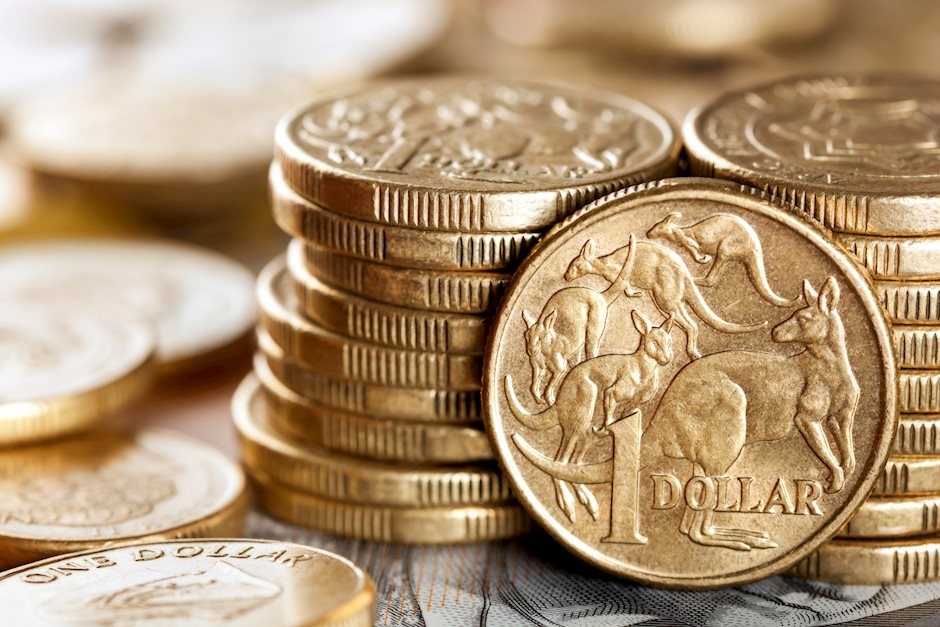Australian Dollar stays strong while markets brace for RBA
- Australian Dollar strengthens against its US counterpart due to RBA policy outlook.
- RBA is expected to maintain its Official Cash Rate unchanged at 4.35%.
- US S&P Global PMIs data came in mixed during the European session

On Monday the AUD/USD was seen rising by 0.40% to 0.6835 by late in the US session. The Reserve Bank of Australia's (RBA) hawkish policy outlook and the release of preliminary S&P Global PMI data for September from the US were the primary movers of the pair.
With uncertainty surrounding Australia's economic future and the RBA maintaining a cautious stance in response to persistent inflation, financial markets anticipate a modest 25 bps interest rate cut in 2024.
Daily digest market movers: Australian Dollar rises on RBA policy outlook, US Dollar recovers
- Australian Dollar edges higher ahead of RBA policy meeting, as investors anticipate an unchanged Official Cash Rate of 4.35%.
- RBA's forward guidance on interest rates beyond the current year will be closely scrutinized amid persistent inflationary pressure and a solid labor market.
- On the other hand, the US Dollar regained some ground, buoyed by skepticism regarding the Federal Reserve's aggressive rate-cutting path.
- CME FedWatch data indicates a total of 75 bps in rate cuts over November and December, with a 50% probability of a 50 bps reduction in November.
- Over 100 economists polled by Reuters forecast 25 bps rate cuts at both of the Fed's remaining meetings.
- On the data front, the composite S&P PMI expanded at a slower pace of 54.4 in September, down from 54.6 in August.
- Manufacturing PMI unexpectedly declined to 47.0, while the services PMI expanded at a better-than-projected 55.4.
AUD/USD technical outlook: Bulls surge and have more room to go
With the pair above 0.6800 and indicators showing strength, the AUD/USD might have more room to go higher. The Relative Strength Index (RSI) is at 64, which means that it isn’t yet in the overbought zone, while the Moving Average Convergence Divergence (MACD) indicator is printing rising green bars. The next target lies around 0.6850.
RBA FAQs
The Reserve Bank of Australia (RBA) sets interest rates and manages monetary policy for Australia. Decisions are made by a board of governors at 11 meetings a year and ad hoc emergency meetings as required. The RBA’s primary mandate is to maintain price stability, which means an inflation rate of 2-3%, but also “..to contribute to the stability of the currency, full employment, and the economic prosperity and welfare of the Australian people.” Its main tool for achieving this is by raising or lowering interest rates. Relatively high interest rates will strengthen the Australian Dollar (AUD) and vice versa. Other RBA tools include quantitative easing and tightening.
While inflation had always traditionally been thought of as a negative factor for currencies since it lowers the value of money in general, the opposite has actually been the case in modern times with the relaxation of cross-border capital controls. Moderately higher inflation now tends to lead central banks to put up their interest rates, which in turn has the effect of attracting more capital inflows from global investors seeking a lucrative place to keep their money. This increases demand for the local currency, which in the case of Australia is the Aussie Dollar.
Macroeconomic data gauges the health of an economy and can have an impact on the value of its currency. Investors prefer to invest their capital in economies that are safe and growing rather than precarious and shrinking. Greater capital inflows increase the aggregate demand and value of the domestic currency. Classic indicators, such as GDP, Manufacturing and Services PMIs, employment, and consumer sentiment surveys can influence AUD. A strong economy may encourage the Reserve Bank of Australia to put up interest rates, also supporting AUD.
Quantitative Easing (QE) is a tool used in extreme situations when lowering interest rates is not enough to restore the flow of credit in the economy. QE is the process by which the Reserve Bank of Australia (RBA) prints Australian Dollars (AUD) for the purpose of buying assets – usually government or corporate bonds – from financial institutions, thereby providing them with much-needed liquidity. QE usually results in a weaker AUD.
Quantitative tightening (QT) is the reverse of QE. It is undertaken after QE when an economic recovery is underway and inflation starts rising. Whilst in QE the Reserve Bank of Australia (RBA) purchases government and corporate bonds from financial institutions to provide them with liquidity, in QT the RBA stops buying more assets, and stops reinvesting the principal maturing on the bonds it already holds. It would be positive (or bullish) for the Australian Dollar.
Author

Patricio Martín
FXStreet
Patricio is an economist from Argentina passionate about global finance and understanding the daily movements of the markets.

















